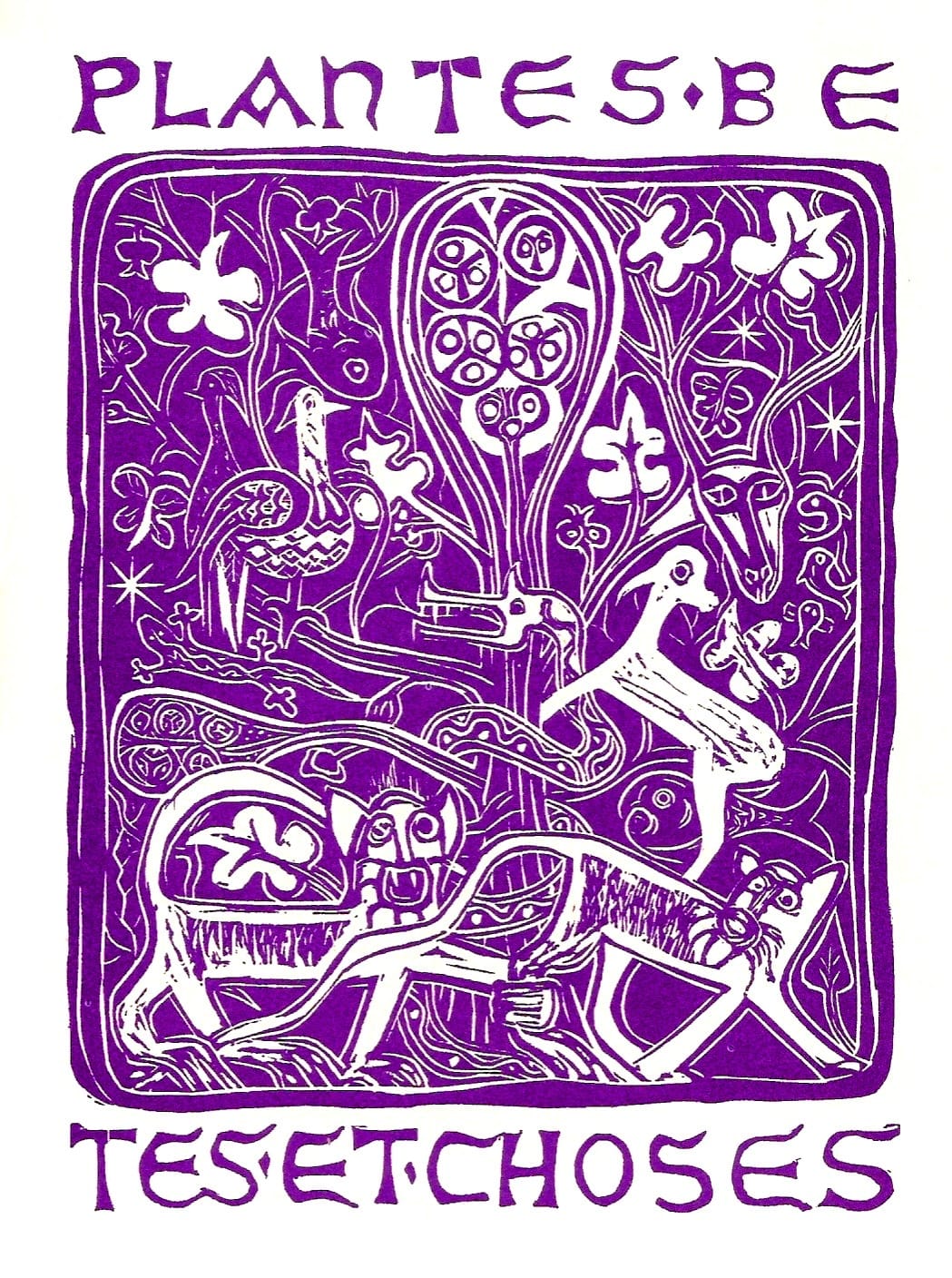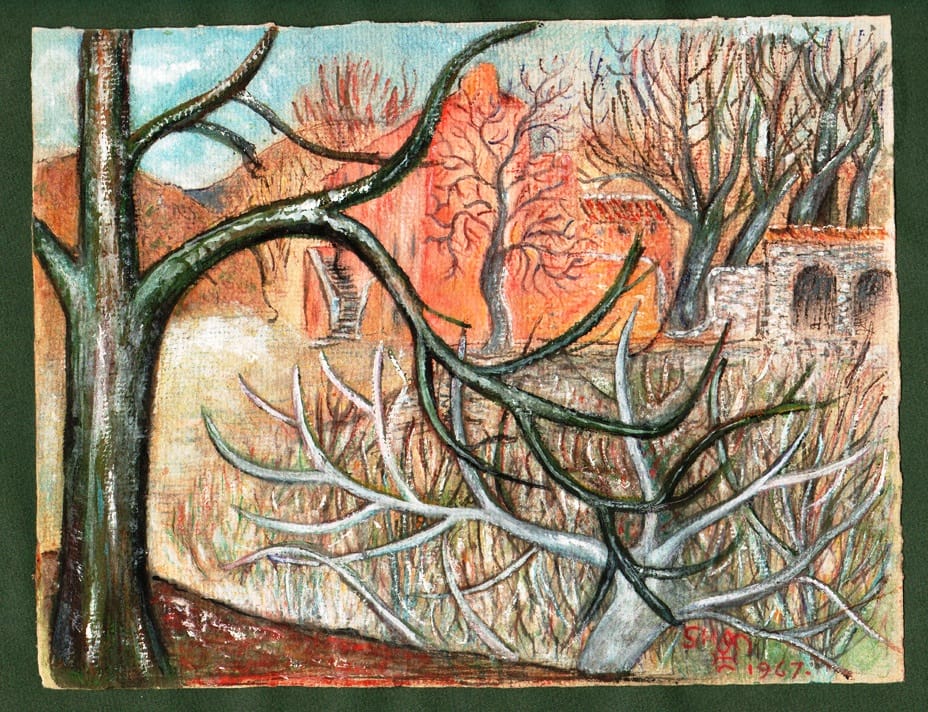A look full of light at the world. An effort to decipher reality in the certainty that everything is meaningful. A poetic and concise language full of symbols from Bible and nature.

Lanza del Vasto’s poetic talent was precocious: his poetry had been already published at the Condorcet high school in 1918. But today, we only have a few remains of his early writings which are characterized by an affected style: (Ballades libres aux Dames du temps présent, 1923) in French and (Fantasia notturna et Conquiste di vento, 1927) in Italian. Lanza had not yet found the form which would become his own and blossom in the 1930’s.
In 1942, he published Chiffre des choses, his absolute and unique work in this area. This volume of 126 poems has specific density and tone, enlighten by its title: the poet’s goal is to decipher the secret of beings and things, to grasp their invisible essence.
A metaphysical poetry then, which is always written simply and plainly. Lanza sees the world as a stained-glass window “which shows the sparkles of the other face”. For him, trees, animals, world face, woman body, their transparency in the light, everything is a sign and makes sense through the prism of language.
We mention the epic poem La Baronne de Carins, published in 1946, translated from Sicilian and adorned with drawings of the author, as well as a volume of poems in Italian, entitled Il Canzoniere del Peregrin d’amore, published in 1979 – for he kept writing his whole life long.
This poetic work, associated with Lanza’s theater work, has an outstanding stylistic unity which begins to be studied. Yaël Comet, with her thesis in Modern Languages: Lanza del Vasto. Une poétique du temps, paved the way. She also published in 2001 beautiful manuscripts of Chiffre des choses, calligraphed by the author.

